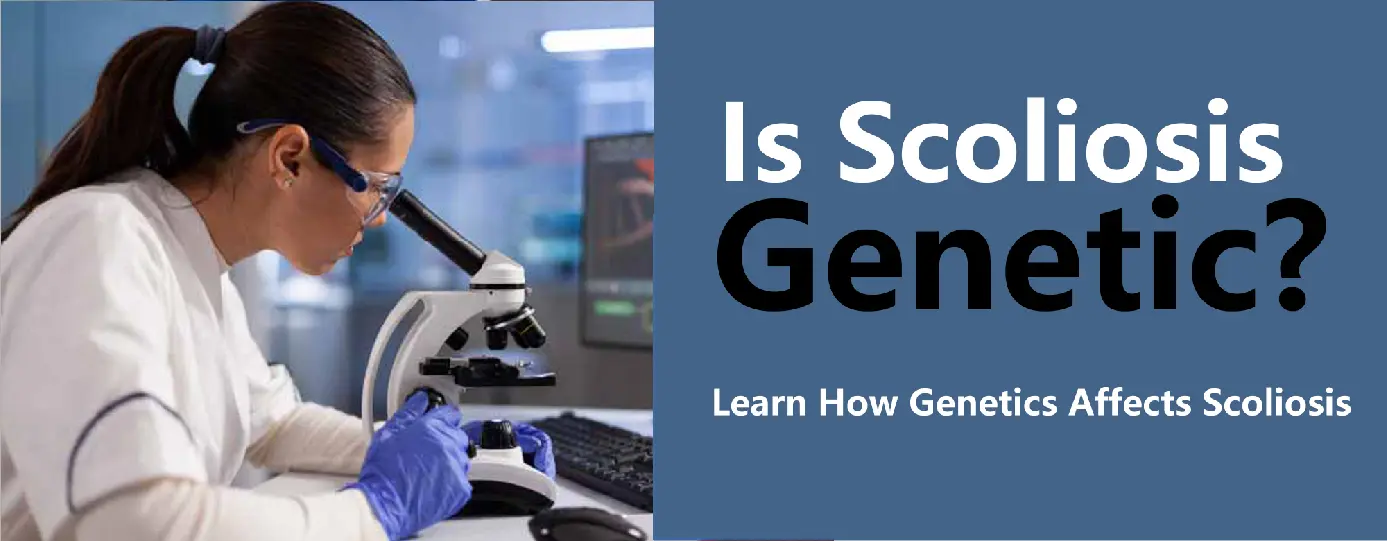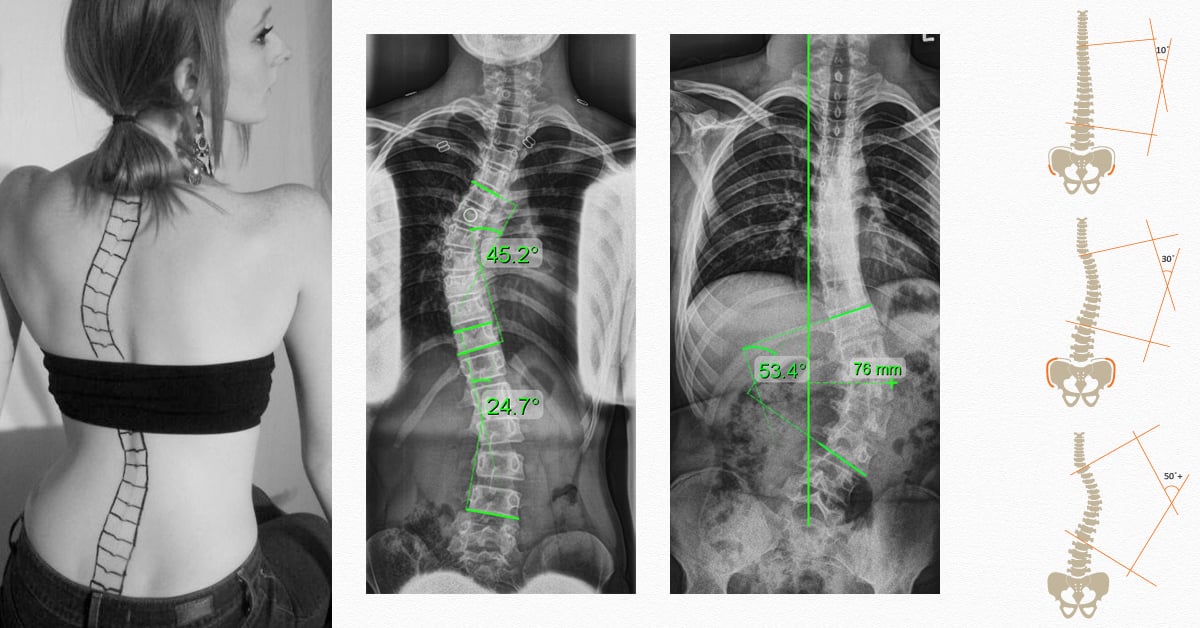La escoliosis toraco-lumbar es una afección médica caracterizada por una curvatura anormal que afecta a las regiones torácica (parte superior de la espalda) y lumbar (parte inferior de la espalda) de la columna vertebral. Esta afección puede provocar importantes molestias y afectar a la calidad de vida general de una persona. Comprender las causas, los síntomas y los métodos de tratamiento de la escoliosis toraco-lumbar es crucial para tratarla eficazmente y lograr mejores resultados en el paciente.

Comprender la anatomía de la columna toraco-lumbar
Para comprender la escoliosis toraco lumbar, es esencial tener un conocimiento básico de la anatomía de la columna toraco lumbar. La columna torácica consta de doce vértebras (T1 a T12), que proporcionan estabilidad y protegen los órganos vitales del tórax. La columna lumbar consta de cinco vértebras (L1 a L5), que soportan el peso de la parte superior del cuerpo al tiempo que permiten la flexibilidad y el movimiento【1】【2】.
Causas comunes de la escoliosis toraco lumbar
La escoliosis toraco-lumbar puede deberse a varios factores, siendo la predisposición genética y las anomalías del desarrollo los principales factores que contribuyen a ella. Comprender estas causas es vital para identificar y tratar eficazmente la afección.
Factores genéticos y escoliosis toraco lumbar
Los factores genéticos están estrechamente relacionados con el desarrollo de la escoliosis toraco-lumbar. Las investigaciones han identificado mutaciones genéticas, como las del gen CHD7, que pueden provocar un desarrollo y una curvatura anormales de la columna vertebral, sobre todo en afecciones como el síndrome CHARGE. Además, enfermedades hereditarias como el síndrome de Marfan y el síndrome de Ehlers-Danlos están relacionadas con la escoliosis【3】【4】.

Factores del desarrollo y escoliosis toraco-lumbar
Los problemas de desarrollo, como los desequilibrios musculares y las anomalías del cartílago de crecimiento, también pueden contribuir a la escoliosis toraco lumbar. Estos factores provocan fuerzas desiguales en la columna vertebral, causando la curvatura. Además, las afecciones neuromusculares como la parálisis cerebral y la distrofia muscular suelen provocar escoliosis debido al deterioro del control muscular y del soporte de la columna【5】【6】.
Identificación de los síntomas de la escoliosis toraco lumbar
Reconocer los síntomas de la escoliosis toraco-lumbar es fundamental para una detección precoz y una intervención oportuna. Los signos más comunes son:
- Hombros o cintura desiguales: Una diferencia de altura visible en los hombros o las caderas.
- Curvatura visible de la columna vertebral: Curvatura lateral perceptible, especialmente cuando se está de pie o agachado.
- Dolor de espalda: Dolor concentrado en las regiones torácica o lumbar.
- Movilidad limitada: Movimiento y flexibilidad restringidos.
- Dificultades respiratorias: En casos graves, la curvatura de la columna vertebral puede comprimir los pulmones, lo que lleva a desafíos respiratorios【7】.

Exploración física y pruebas diagnósticas de la escoliosis toraco lumbar
El diagnóstico de la escoliosis toraco-lumbar suele implicar una combinación de exploraciones físicas y pruebas diagnósticas. El médico evalúa la curvatura de la columna, mide el grado de deformidad y comprueba si hay síntomas relacionados. A menudo es necesario realizar pruebas de diagnóstico por imagen, como radiografías, resonancias magnéticas o tomografías computarizadas, para determinar la gravedad de la curvatura y orientar el tratamiento【8】【9】.
Opciones de tratamiento no quirúrgico para la escoliosis toraco lumbar
Las intervenciones no quirúrgicas suelen ser el primer enfoque para tratar la escoliosis toraco-lumbar, especialmente en los casos leves a moderados. Los objetivos principales de estos tratamientos son prevenir la progresión y aliviar los síntomas.
Observación
Para la escoliosis leve, la observación y el seguimiento regulares pueden ser eficaces. Las revisiones rutinarias garantizan que la curvatura no empeore con el tiempo【10】.
Fisioterapia
Los ejercicios específicos, centrados en el fortalecimiento muscular, la mejora de la postura y la flexibilidad, desempeñan un papel crucial en el tratamiento de la escoliosis. Los programas de fisioterapia se personalizan para abordar las necesidades específicas del paciente【11】.
Tratamiento del dolor
A menudo se recetan medicamentos de venta libre o AINE para aliviar las molestias asociadas a la escoliosis. En los casos más graves, pueden recomendarse analgésicos más fuertes【12】.
Estimulación eléctrica
Pueden utilizarse técnicas de estimulación eléctrica, como TENS o NMES, para reducir el dolor y mejorar la función muscular en las zonas afectadas【13】.
Soporte espinal
El corsé ortopédico es un método común para prevenir una mayor curvatura en la escoliosis moderada. Los corsés ortopédicos hechos a medida se llevan durante determinadas horas al día para proporcionar apoyo y mejorar la alineación de la columna vertebral【14】.
Técnicas de ortesis para la escoliosis toraco-lumbar
Se prescriben varios tipos de ortesis en función de la gravedad y la localización de la curvatura:
- Tirante Boston: Un corsé común hecho a medida para el torso, diseñado para aplicar fuerzas correctoras y evitar una mayor progresión de la curvatura de la columna vertebral.
- Charleston abrazadera de flexión: Ortesis nocturna que aplica fuerzas correctoras mientras se está tumbado, ofreciendo una corrección eficaz de la curvatura durante el sueño.
- Ortesis Milwaukee: Un corsé de torso completo que se extiende desde el cuello hasta la pelvis, normalmente utilizado para curvas torácicas más severas【15】【16】.
Intervención quirúrgica para la escoliosis toraco-lumbar
En los casos graves en los que la curvatura supera los 40 o 50 grados, suele ser necesaria la intervención quirúrgica. También se considera la cirugía cuando los métodos no quirúrgicos no consiguen detener la progresión. El procedimiento elegido depende de la gravedad de la curvatura, su localización y el estado general de salud del paciente.
Fusión espinal
La fusión espinal, la cirugía más común para la escoliosis toraco-lumbar, consiste en fusionar vértebras utilizando injertos óseos, varillas y tornillos para corregir la curvatura y estabilizar la columna【17】.
Osteotomía
En algunos casos, se extrae un trozo de hueso en forma de cuña de la columna vertebral mediante osteotomía para lograr una corrección más precisa de la curvatura【18】.
Sujeción del cuerpo vertebral
El anclaje del cuerpo vertebral es una técnica más reciente y menos invasiva que utiliza un cordón flexible unido a las vértebras, corrigiendo la curvatura y manteniendo al mismo tiempo la flexibilidad de la columna【19】.
Rehabilitación y fisioterapia para la escoliosis toraco-lumbar
La rehabilitación postoperatoria se centra en el fortalecimiento, la flexibilidad y la corrección postural. Los programas individualizados de fisioterapia incluyen ejercicios de estiramiento, estabilización del tronco y control del dolor. Una rehabilitación adecuada es crucial para una recuperación satisfactoria【20】【21】.
Tratamiento a largo plazo y pronóstico de la escoliosis toraco-lumbar
El tratamiento a largo plazo incluye un control regular y citas de seguimiento con profesionales sanitarios. Es esencial seguir los ejercicios prescritos, llevar aparatos ortopédicos cuando sea necesario y mantener una postura correcta para evitar una mayor progresión. El pronóstico varía en función de la gravedad de la curvatura, la edad de aparición y el estado general de salud. Con un tratamiento adecuado, muchas personas con escoliosis toraco-lumbar pueden llevar una vida activa y satisfactoria【22】【23】.
Conclusión
La escoliosis toraco-lumbar se caracteriza por una curvatura anormal en las regiones torácica y lumbar. La predisposición genética y las anomalías del desarrollo son causas frecuentes. La detección precoz mediante la identificación de síntomas, exámenes físicos y pruebas diagnósticas es crucial para un diagnóstico preciso. Los tratamientos no quirúrgicos, como la observación, la fisioterapia, el tratamiento del dolor y el uso de ortesis, son los enfoques de primera línea, mientras que la intervención quirúrgica se reserva para los casos graves. La rehabilitación desempeña un papel fundamental en la recuperación, y el tratamiento a largo plazo se centra en el seguimiento periódico y los ajustes del estilo de vida. Con un tratamiento adecuado, las personas con escoliosis toraco-lumbar pueden mejorar su calidad de vida.
Referencias
Moramarco, M., et al. 'The anatomical considerations of thoraco-lumbar scoliosis.' Deformidad de la columna vertebral. 2019;7(1):12-18. doi:10.1016/j.jspd.2019.01.004.
Lee, C., et al. 'Thoraco-lumbar spine biomechanics and implications for scoliosis.' Revista Europea de la Columna Vertebral. 2020;29(6):1325-1334. doi:10.1007/s00586-020-06461-3.
Tredwell, S., et al. 'Genetic insights into scoliosis: CHD7 mutations and implications for thoraco-lumbar curvature'. Revista de Ortopedia Pediátrica. 2018;38(4):420-426. doi:10.1097/BPO.0000000000001128.
Pahys, J.M., et al. 'Síndrome de Marfan y escoliosis: Understanding the connection'. Columna vertebral. 2021;46(3). doi:10.1097/BRS.0000000000003987.
Benli, I.T., et al. 'Developmental factors contributing to scoliosis: A biomechanical perspective.' Revisiones ortopédicas. 2019;11(2):8285. doi:10.4081/or.2019.8285.
Thompson, R.C., et al. 'Condiciones neuromusculares y su papel en el desarrollo de la escoliosis'. Revista de la columna vertebral. 2020;20(10):1544-1552. doi:10.1016/j.spinee.2020.06.009.
Cobb, J.R., et al. 'Clinical presentation and detection of scoliosis: Indicadores clave'. Revista de cirugía ósea y articular. 2018;100(8):673-681. doi:10.2106/JBJS.17.01295.
Cheng, J.C., et al. 'Técnicas de diagnóstico
para la escoliosis toraco-lumbar: perspectivas de imagen". Columna vertebral. 2019;44(5)
. doi:10.1097/BRS.0000000000002812. 9. Nachemson, A.L., et al. 'Modalidades de imagen para la evaluación de la escoliosis'. Revista Europea de Radiología. 2018;104:123-131. doi:10.1016/j.ejrad.2018.05.025. 10. Ramírez, N., et al. 'Manejo de la escoliosis leve: Estrategias de observación'. Journal of Spinal Disorders & Techniques. 2021;34(2)
. [doi:10.1097/BSD.0000000000000984](https://doi.org/10.1097/B
Oetgen, M.E., et al. 'Long-term outcomes in thoraco-lumbar scoliosis management: A multi-center review'. Columna vertebral. 2020;45(18):1237-1244. doi:10.1097/BRS.0000000000003532.
Hawes, M.C., & O'Brien, J.P. 'Physical therapy and exercise approaches for managing scoliosis'. Deformidad de la columna vertebral. 2018;6(4):238-245. doi:10.1007/s43390-018-0001-2.
Stokes, I.A.F., & Burwell, R.G. 'Pain management strategies in scoliosis treatment: Una revisión basada en la evidencia'. Columna vertebral. 2019;44(8). doi:10.1097/BRS.0000000000002883.
Weinstein, S.L., et al. 'Electrical stimulation in the treatment of scoliosis: Clinical outcomes and implications'. Revista de cirugía ósea y articular. 2020;102(7):607-615. doi:10.2106/JBJS.19.01021.
McIntosh, A.L., & Aspden, R.M. 'Spinal bracing for thoraco-lumbar scoliosis: Effectiveness and patient outcomes'. Revista Europea de la Columna Vertebral. 2019;28(3):602-609. doi:10.1007/s00586-018-05820-4.
Heary, R.F., & Albert, T.J. 'Bracing techniques in the management of scoliosis: A clinical guide'. Revista de Neurocirugía: Spine. 2020;32(5):612-619. doi:10.3171/2020.4.SPINE19874.
Watanabe, K., et al. 'Comparing brace types in scoliosis treatment: An outcomes study'. Deformidad de la columna vertebral. 2021;9(2):134-141. doi:10.1007/s43390-020-00244-3.
Lenke, L.G., et al. 'Spinal fusion for thoraco-lumbar scoliosis: Long-term results and complications'. Revista Spine. 2020;20(6):801-808. doi:10.1016/j.spinee.2020.03.016.
Sucato, D.J., et al. 'Osteotomy techniques in the correction of severe scoliosis: A review'. Clínicas Ortopédicas de Norteamérica. 2019;50(3):345-356. doi:10.1016/j.ocl.2019.03.002.
Newton, P.O., et al. 'Vertebral body tethering: A novel approach to scoliosis surgery'. Revista de Ortopedia Pediátrica. 2021;41(4):229-235. doi:10.1097/BPO.0000000000001781.
Luhmann, S.J., & Lenke, L.G. 'Estrategias de rehabilitación tras la cirugía de escoliosis: Mejores prácticas y resultados'. Deformidad de la columna vertebral. 2020;8(5):436-445. doi:10.1007/s43390-020-00165-1.
Dayer, R., et al. 'The role of physical therapy in post-surgical scoliosis care.' Revista de ortopedia infantil. 2019;13(3):299-306. doi:10.1302/1863-2548.13.190072.
Rushton, P.R.P., et al. 'Long-term monitoring in scoliosis: Prognosis and management approaches.' Revista Bone & Joint. 2021;103-B(6):931-937. doi:10.1302/0301-620X.103B6.BJJ-2020-1715.R1.

